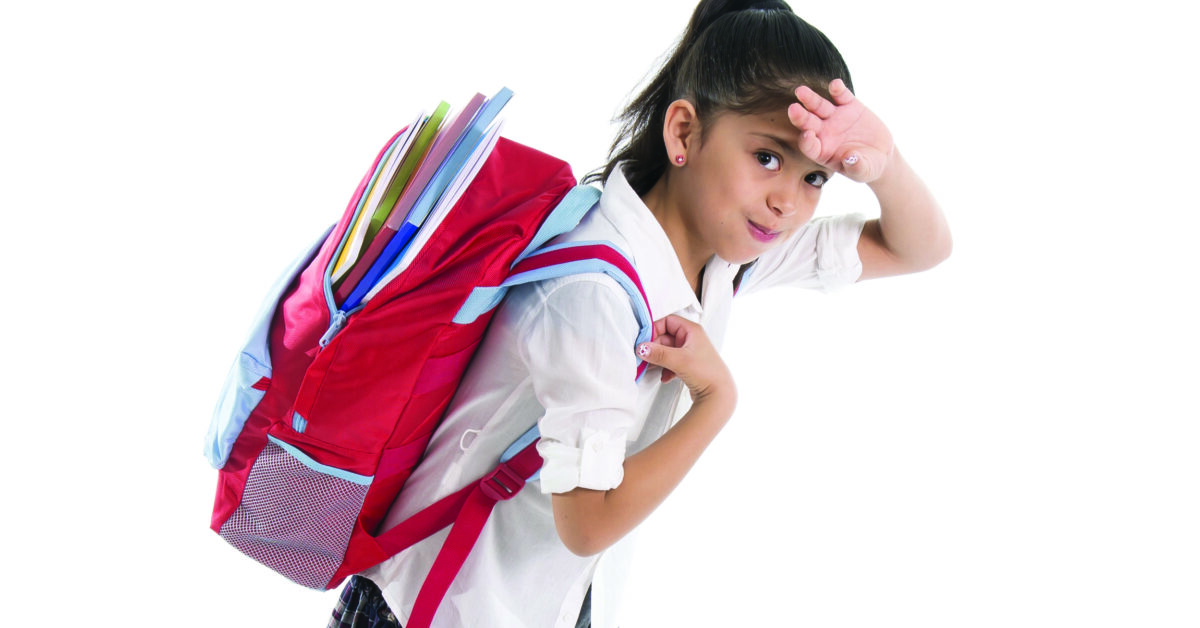
Top Docs & Toughest Cases
September 2024
Fall Tree Planting Season Creates a Hurricane-Resistant Landscape
September 2024by Kristy Como Armand
Have the first several weeks of school added weight onto your students’ shoulders? We’re talking about backpack weight!
A heavy backpack loaded with books, a lunch, and school supplies can pose a risk for injuries.
According to the U.S. Consumer Product Safety Commission, an estimated 14,000 children are injured each year due to overloaded backpacks. Research indicates that many students carry far more than the recommended weight (less than 10 -15 percent their body weight) in backpacks, which puts them at increased risk for back strain and injury. One study published in the medical journal Spine found that nearly half of grade school children who carried bags that weighed 20 pounds or more who walked to school had a history of back pain. Concerned parents have lobbied schools to cut down on homework, and some schools have even started issuing duplicate textbooks – one for home and one for school.
“There’s no question that overloaded and improperly used backpacks place extra stress on the spine and shoulders which leads to muscle fatigue and strain,” says Craig Morton., MD, physical medicine and rehabilitation specialist with Center for Orthopaedics. “We know that up to 25 percent of young students carry backpacks weighing more than 20 percent of their bodyweight on a daily basis. This is equivalent to an adult carrying a small refrigerator and is far too much weight for a child to support, especially if they walk to school or carry it on only one shoulder.”
Dr. Morton explains that when a backpack is too heavy, a child hyperextends or arches their back or leans the head and trunk forward to compensate for the weight of the bag. This stresses the muscles in the neck and back, increasing the risk of fatigue and injury. He says using only one strap causes asymmetry of the spine and affects the spine’s natural shock absorption abilities. “Another concern we have is the bad habits children can develop as a result of carrying heavy backpacks. Excessive weight in backpacks can cause some children to develop bad habits early in life like poor posture or excessive slouching, which can lead to back problems in the future.”
Fortunately, Dr. Morton says injury is preventable, and it is possible for kids to carry backpacks comfortably. When purchasing a backpack, parents should pay close attention to the backpack’s construction. Choose one with two wide, padded straps that go over the shoulders and a waist belt to distribute weight more evenly across the body. The width should not be greater than the child’s torso.
Dr. Morton offers these additional recommendations for backpack use:
• Multiple compartments to help distribute the weight.
• Use both shoulder straps.
• If the backpack is too heavy, remove some books and carry them cradled in the arms or against the stomach.
• Adjust the straps so the backpack sits on the hips and pelvic area, not at the top or at the buttocks.
• Arrange the heaviest items close to the back.
• Use a backpack with wheels if your school allows.
• If your child already has back problems, ask the school to issue a second set of books that can stay at home.
Parents should also be alert for warning signs of back problems from backpacks, including aching in the shoulder, neck or back; pain or tingling in the arms, wrists or hands, especially at night; muscle weakness; red marks or creases on the shoulder; struggling to get the backpack on and off; and noticeable imbalances in the child’s posture, including tilting the head and neck to one side and an uneven gait.






